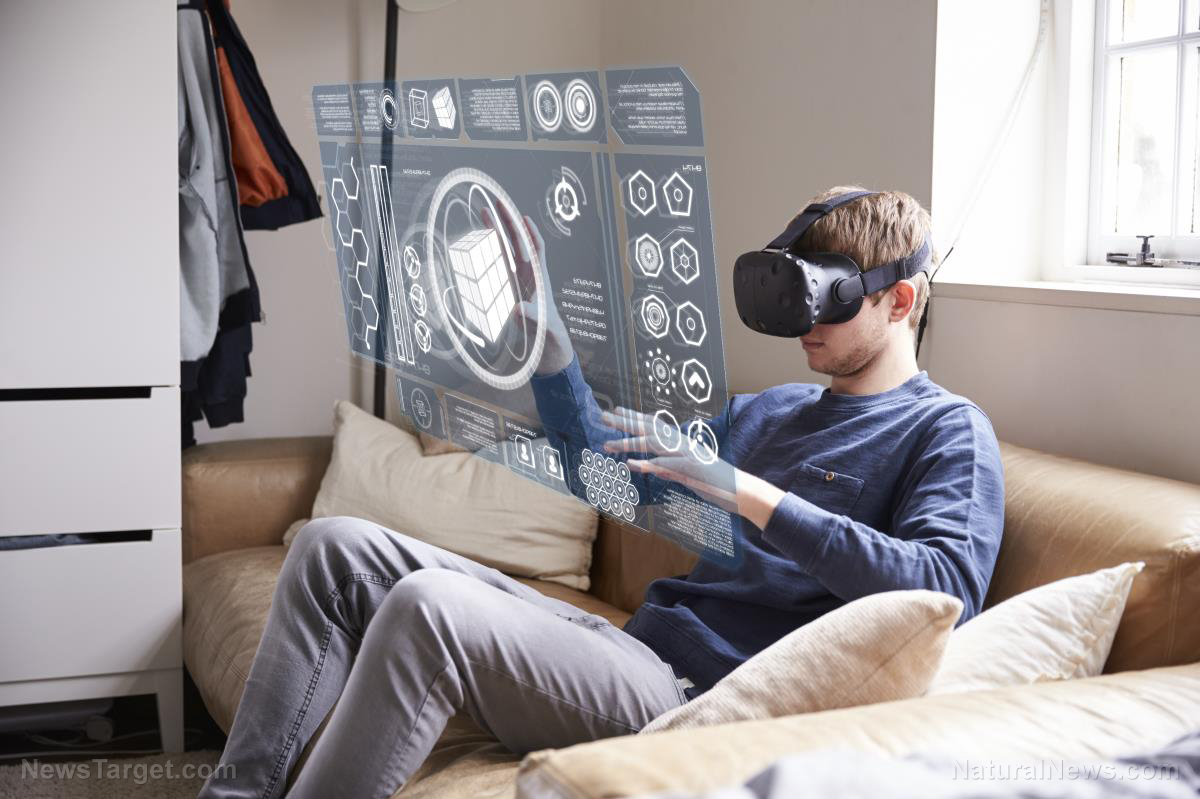Watch the birdie! Pediatric hospitals find the distraction of VR helps with pain management
11/12/2017 / By Zoey Sky

These days, virtual reality (VR) is often employed by people who want to enjoy an immersive gaming experience. However, according to a recent study, virtual reality can soon be used for pain management at pediatric hospitals.
Aside from using technological advances to blur the lines between the game world and the real world, virtual reality has another practical application. Virtual reality might be the next step in pain management, and this can benefit children who have to undergo medical procedures that often cause them anxiety and pain on a regular basis. (Related: Virtual pain relief: Researchers believe video games can reprogram your brain, or at least distract you.)
Researchers at Children’s Hospital Los Angeles supervised a study that aimed to evaluate the efficacy of using VR for pain management when blood samples were taken from young patients. Based on the results, the use of VR successfully decreased both the parents’ and patient’s perception of “acute pain, anxiety, and general distress” while the procedure was taking place. The study’s results were published in the Journal of Pediatric Psychology.
Jeffrey I. Gold, Ph.D., who is also the director of the Pediatric Pain Management Clinic at Children’s Hospital Los Angeles, said, “Given the immersive and engaging nature of the VR experience, this technology has the capacity to act as a preventative intervention transforming the blood draw experience into a less distressing and potentially pain-free medical procedure, particularly for patients with more anxiety about having their blood drawn.”
Mother Nature's micronutrient secret: Organic Broccoli Sprout Capsules now available, delivering 280mg of high-density nutrition, including the extraordinary "sulforaphane" and "glucosinolate" nutrients found only in cruciferous healing foods. Every lot laboratory tested. See availability here.
An earlier study established the effectiveness of distraction while a patient was undergoing painful procedures, like needle pain, and the investigators posited that the new VR technology, “an arguably more powerful and immersive intervention,” may be even more effective at minimizing pain and anxiety.
Both Gold and Nicole E. Mahrer, Ph.D., of the Department of Anesthesiology Critical Care Medicine at CHLA and the study’s co-author, suggested that “VR analgesia” or pain control stems from the neurobiological interplay of the parts of the brain which controls the “visual, auditory, and touch sensory experience” that results in an analgesic effect in the patient.
For the study, the researchers observed patients aged 10 to 21 years old, along with the participants’ caregiver and the phlebotomist in the outpatient blood draw clinic. The patients randomly received either standard of care, which often includes a topical anesthetic cream or spray with a film playing in the room, or standard of care that came with the virtual reality game while a routine blood draw was performed. The researchers studied both the pre-procedural and post-procedural standardized measures of pain, anxiety, and satisfaction, and their findings revealed that VR is “feasible, tolerated, and well-liked” by the patients, along with their parents and even the phlebotomists.
Gold, who is also a professor of Anesthesiology, Pediatrics, and Psychiatry & Behavioral Sciences at the Keck School of Medicine of USC, stated, “VR, especially immersive VR, draws heavily on the limited cognitive resource of attention by drawing the user’s attention away from the hospital environment and the medical procedures and into the virtual world.”
Based on the positive results of the study, VR can soon be used for pain management during certain medical procedures for younger patients. By utilizing this technology, there can be a significant decrease in narcotic use, which is a worrying health concern that needs to be addressed.
Gold concluded, “Ultimately, the aim of future VR investigations should be to develop flexible VR environments to target specific acute and chronic pain conditions.”
The future of VR in pain relief
Aside from easing the stress and pain that most young patients suffer through, VR, which often distracts players, can help resolve opioid overuse.
Dr. Anita Gupta of the Woodrow Wilson School of Public and International Affairs at Princeton University in New Jersey, who was the lead author for a separate study on VR and pain relief, explained, “Guided imagery has long been a treatment for psychological disorders, and virtual reality is a more immersive way to provide guided imagery.” In this new study, the researchers studied articles published from 2000 to 2016 that looked into the different ways that virtual reality can be used for pain relief.
Max Ortiz Catalan, a researcher at Chalmers University of Technology in Gothenburg, Sweden, cautioned that patients need to remember that VR is only a tool that is often used in designing treatments and that it shouldn’t be used as a treatment on its own. Catalan, who was not involved in the study headed by Gupta, added that while VR can’t be prescribed, treatments that use it and the methods these treatments are based on are important. He concluded, “’Two different methods can use virtual reality and one works while the other doesn’t depending on how virtual reality is used.”
You can learn more about how technology can be used to improve lives at VirtualReality.news.
Sources include:
Tagged Under: future tech, health, mind-body medicine, pain relief, science, technology, Virtual reality




















